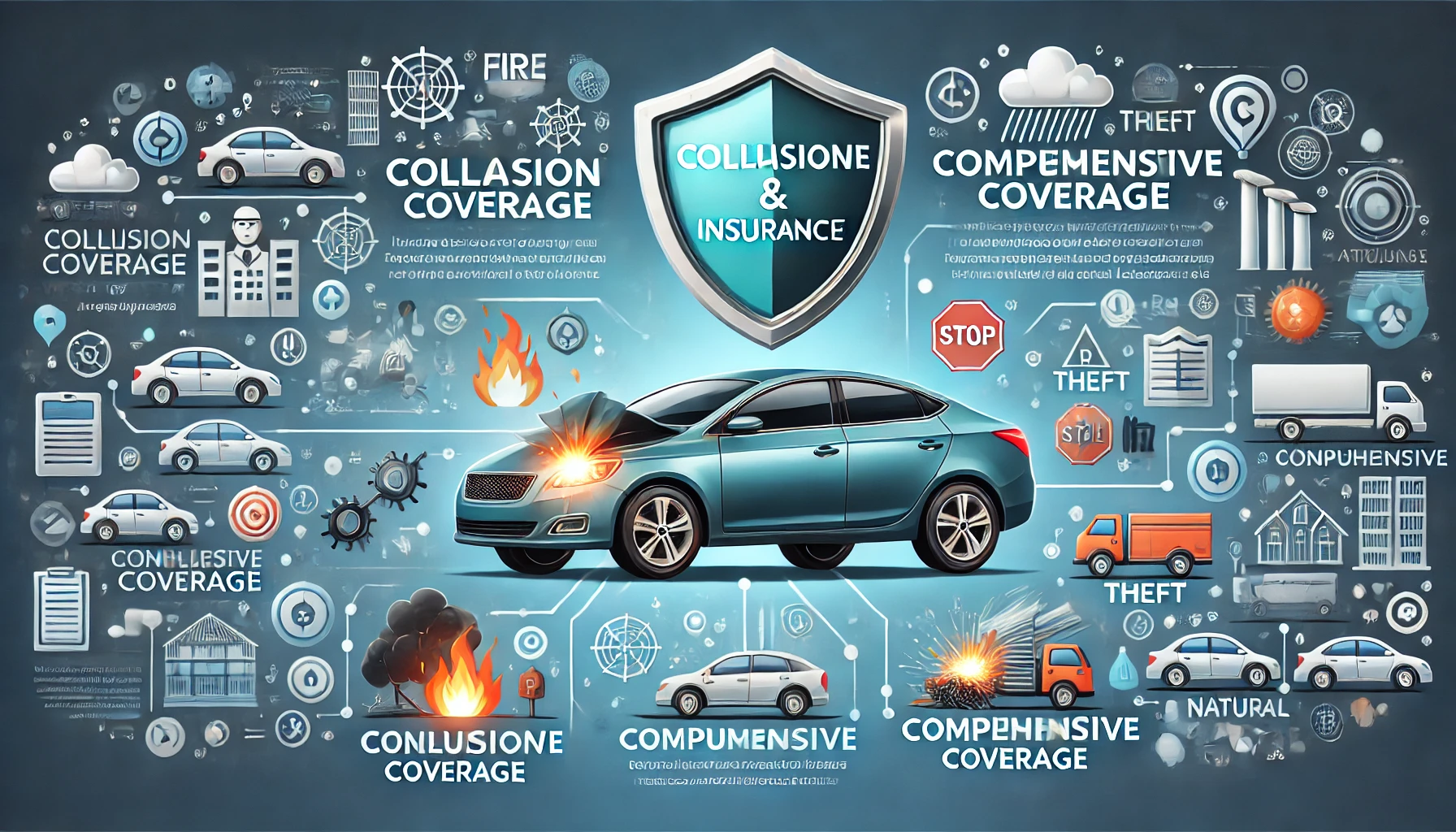Key Takeaways
- Collision and comprehensive coverage offer financial protection from a wide range of incidents.
- Understanding the differences and benefits can help drivers make informed insurance decisions.
- Many vehicle owners find that the peace of mind provided by these policies is well worth the investment.
Why Everyone Should Consider Comprehensive Coverage
In the vast landscape of car insurance, understanding what is comprehensive auto insurance can empower vehicle owners significantly. Unlike standard liability insurance, comprehensive coverage provides an extensive safety net beyond traffic mishaps. It prepares vehicle owners for challenges like theft, vandalism, or environmental damage from natural calamities. For instance, if a tree falls on your car during a storm or your vehicle is stolen from a parking lot, comprehensive insurance covers these expenses. This type of insurance is particularly beneficial for those residing in areas with high crime rates or unpredictable weather patterns. A well-rounded policy that accounts for these factors can significantly mitigate the financial repercussions of such unfortunate events. The additional peace of mind achieved by securing comprehensive coverage is invaluable for anyone wanting to safeguard their investment against unforeseen circumstances.
Understanding Collision Coverage: What You Need to Know
Collision coverage complements comprehensive coverage by specifically addressing damages incurred during road accidents. It provides much-needed protection when your vehicle collides with another car or even a stationary object like a lamppost or a guardrail. Understanding these specifics is crucial to evaluating your personal insurance needs. Those who drive frequently or commute in heavy traffic zones often benefit significantly from adding collision coverage to their policy. This coverage ensures that repair costs are managed, allowing drivers to focus less on financial burdens and more on maintaining safety on the road. Lenders might require individuals who finance or lease new vehicles to secure collision insurance as part of their loan or lease agreements. Being aware of such requirements and understanding one’s driving environment and habits can aid in tailoring an insurance policy that adequately covers potential risks.
How to Determine the Right Coverage for Your Needs
Determining the right insurance coverage boils down to carefully analyzing your specific circumstances. Begin by assessing the financial impact of your vehicle; if it’s a high-value car, it’s generally wise to consider both collision and comprehensive insurance to protect your investment fully. Additionally, consider factors like your past driving record, which might indicate your likelihood of an accident, and the potential risks associated with the areas you usually drive in. For instance, rural areas might pose less risk for collision incidents than urban environments bustling with traffic. Performing a simple cost-benefit analysis by weighing these factors against the likelihood and cost of incidents can lead to a more informed decision. Carefully evaluating these elements could pave the way for establishing a coverage plan that fits your unique scenario.
The Role of Deductibles and Policy Limits in Your Decision
The choice of deductibles and policy limits plays a vital role in shaping your auto insurance coverage. A deductible is the amount you’re expected to pay out-of-pocket in the event of an insurance claim. Opting for a higher deductible often reduces your insurance premium, making the coverage more affordable. However, it’s essential to fathom the financial implications; you would bear a noticeable portion of the costs in an accident or damage. On the other hand, choosing lower deductibles raises your premium but offers better financial coverage when you need to file a claim, minimizing out-of-pocket expenditures. Balancing these elements ensures you are neither overpaying for excessive coverage nor leaving yourself financially exposed to inadequate support. Thus, considering how much you’re willing to outlay in the event of a claim can be pivotal in selecting the most suitable policy.
Common Misconceptions About Auto Insurance
Misconceptions and myths can cloud judgment, leading many vehicle owners to make misinformed decisions about their insurance needs. A prevalent myth is that older vehicles automatically negate the need for extensive coverage plans like collision or comprehensive insurance. However, the age of a vehicle does not exempt it from being stolen, vandalized, or damaged by natural events. Ignoring these risks can lead to unexpected financial strains. Moreover, there are misconceptions about actual policy coverage specifics; some believe all insurance policies inherently cover everything, which can lead to gaps in protection. Understanding what your policy covers and acknowledging the risks you face, regardless of your vehicle’s age, is crucial for maintaining a balanced and effective insurance strategy.
Insurance Discounts and How You Can Benefit
Insurance providers understand the importance of maintaining customer loyalty and often offer various discounts on coverage. For instance, many companies reward safe drivers with cost reductions, promoting responsible habits. Likewise, bundling multiple insurance policies under the same provider, like home and auto, can lead to comprehensive discounts. Beyond these, some insurers offer discounts for installing safety features in your car or being part of specific professional associations. Policyholders can significantly reduce insurance costs by exploring these opportunities and inquiring about such discounts. This savings aspect encourages many to maintain a broader scope of coverage, making it easier to afford comprehensive and collision protections without straining their budgets.
Staying Updated with Policy Renewals and Adjustments
Over time, individual circumstances and the insurance market evolve, necessitating regular reviews of one’s insurance policies to ensure continued adequacy and cost-effectiveness. Lifestyle changes, financial shifts, or even changes in employment status might influence your insurance needs. As such, it’s crucial to revisit your coverage regularly and make necessary adjustments to reflect your current situation accurately. Furthermore, staying informed about new developments within the insurance sector can provide insights into emerging products or discounts beneficial to your specific needs. Maintaining this proactive approach allows policyholders to stay ahead of necessary changes, ensuring they remain sufficiently protected while taking full advantage of any advantageous market changes.
